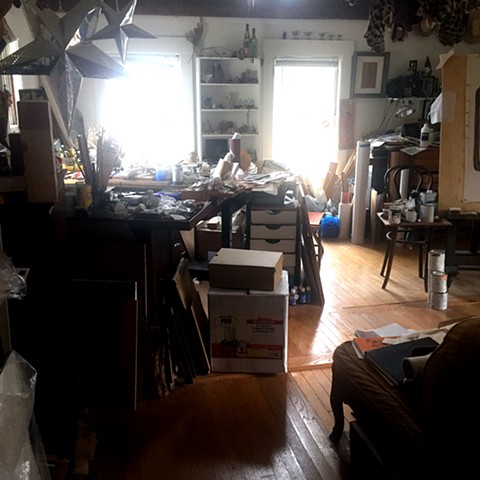On Being An Artist

As long as I can remember I have been drawing –– almost every child does, but artists persist. At first, I tried to represent what I saw, giving way later to an abstract phase and then to the development of content and its implications.
There should be something in a work of art that is arresting and, like a poem or a prayer, then grow into itself and add new layers of meaning. Once it has left the studio, my work stands alone to allow these multiple interpretations.
For media, I like to use what ever seems best to express an idea. This includes a clean range of primary and secondary colors that complement each other and offer positivity and optimism.
As well as paintings, I create small objects: books, boxes, bags, bones ––things that can be opened, handled, enjoyed in a sensory way beyond the visual but that lead to layers of connection between object and viewer.
Mostly I have lived in rural areas, so much of what I make reflects my sense of the variety and riot what I observe in the outdoors.
Drawing for archaeologists I often worked with fragments of pots. Many were patterned with designs made with thumbs or finger nails, others painted with stylized animal. These, I always thought, made connections between the need for art some thousands of years ago and today.
Having worked alongside people from other cultures, in Europe, India and the Middle East, I look for the universal and how to express it and its energies.